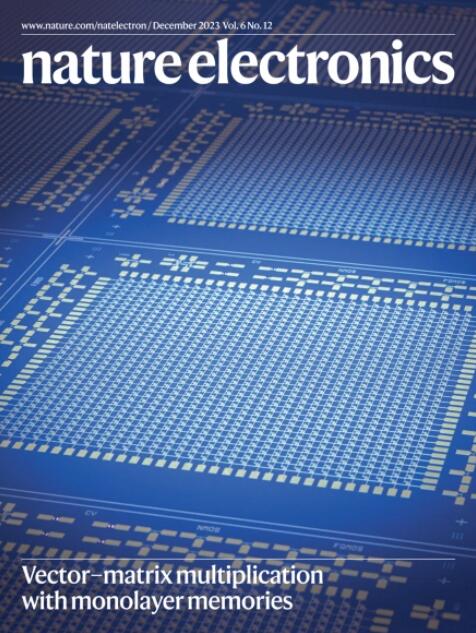An electro-optical Mott neuron based on niobium dioxide
IF 40.9
1区 工程技术
Q1 ENGINEERING, ELECTRICAL & ELECTRONIC
引用次数: 0
Abstract
Various applications—including brain-like computing and on-chip artificial vision—increasingly demand a combination of electronic and photonic techniques. However, integrating both approaches on a single chip is challenging, and solutions typically rely on disparate components with power-hungry signal conversions. Here we report electro-optical Mott neurons that combine visible light emission with electrical threshold switching, as well as neuron-like oscillations. The devices are based on thin films of sputtered niobium dioxide (NbO2), a Mott insulator–metal transition material, operating at room temperature and emitting light that peaks around 810 nm. Operando measurements reveal an electronic origin to the light emission: charge carrier relaxation initiated by high-field transport in the NbO2. Our devices combine electrical and optical functions within a single material, thereby expanding the options available for future artificial intelligence hardware. A single component built from sputtered niobium dioxide, a Mott insulator–metal transition material, can simultaneously exhibit both visible light emission and electrical threshold switching with neuron-like oscillations.


基于二氧化铌的光电莫特神经元
各种各样的应用——包括类脑计算和芯片人工视觉——越来越需要电子和光子技术的结合。然而,将这两种方法集成到单个芯片上是具有挑战性的,并且解决方案通常依赖于具有耗电信号转换的不同组件。在这里,我们报道了光电Mott神经元,它结合了可见光发射和电阈值开关,以及神经元样振荡。该装置基于溅射二氧化铌(NbO2)薄膜,这是一种莫特绝缘体-金属过渡材料,在室温下工作并发出峰值在810纳米左右的光。Operando测量揭示了光发射的电子起源:NbO2中由高场输运引起的载流子弛豫。我们的设备在单一材料中结合了电气和光学功能,从而扩展了未来人工智能硬件的可用选项。
本文章由计算机程序翻译,如有差异,请以英文原文为准。
求助全文
约1分钟内获得全文
求助全文
来源期刊

Nature Electronics
Engineering-Electrical and Electronic Engineering
CiteScore
47.50
自引率
2.30%
发文量
159
期刊介绍:
Nature Electronics is a comprehensive journal that publishes both fundamental and applied research in the field of electronics. It encompasses a wide range of topics, including the study of new phenomena and devices, the design and construction of electronic circuits, and the practical applications of electronics. In addition, the journal explores the commercial and industrial aspects of electronics research.
The primary focus of Nature Electronics is on the development of technology and its potential impact on society. The journal incorporates the contributions of scientists, engineers, and industry professionals, offering a platform for their research findings. Moreover, Nature Electronics provides insightful commentary, thorough reviews, and analysis of the key issues that shape the field, as well as the technologies that are reshaping society.
Like all journals within the prestigious Nature brand, Nature Electronics upholds the highest standards of quality. It maintains a dedicated team of professional editors and follows a fair and rigorous peer-review process. The journal also ensures impeccable copy-editing and production, enabling swift publication. Additionally, Nature Electronics prides itself on its editorial independence, ensuring unbiased and impartial reporting.
In summary, Nature Electronics is a leading journal that publishes cutting-edge research in electronics. With its multidisciplinary approach and commitment to excellence, the journal serves as a valuable resource for scientists, engineers, and industry professionals seeking to stay at the forefront of advancements in the field.
 求助内容:
求助内容: 应助结果提醒方式:
应助结果提醒方式:


